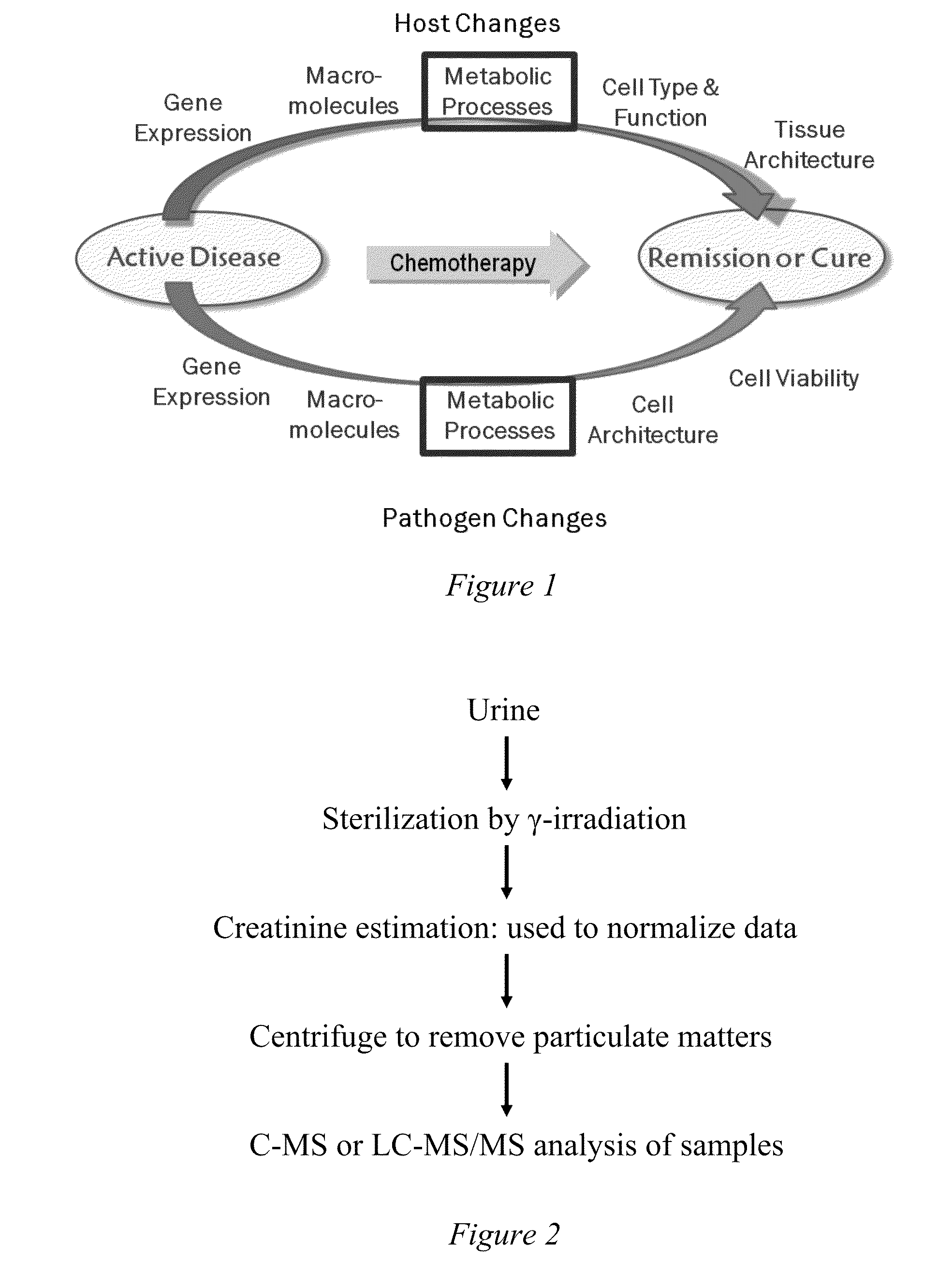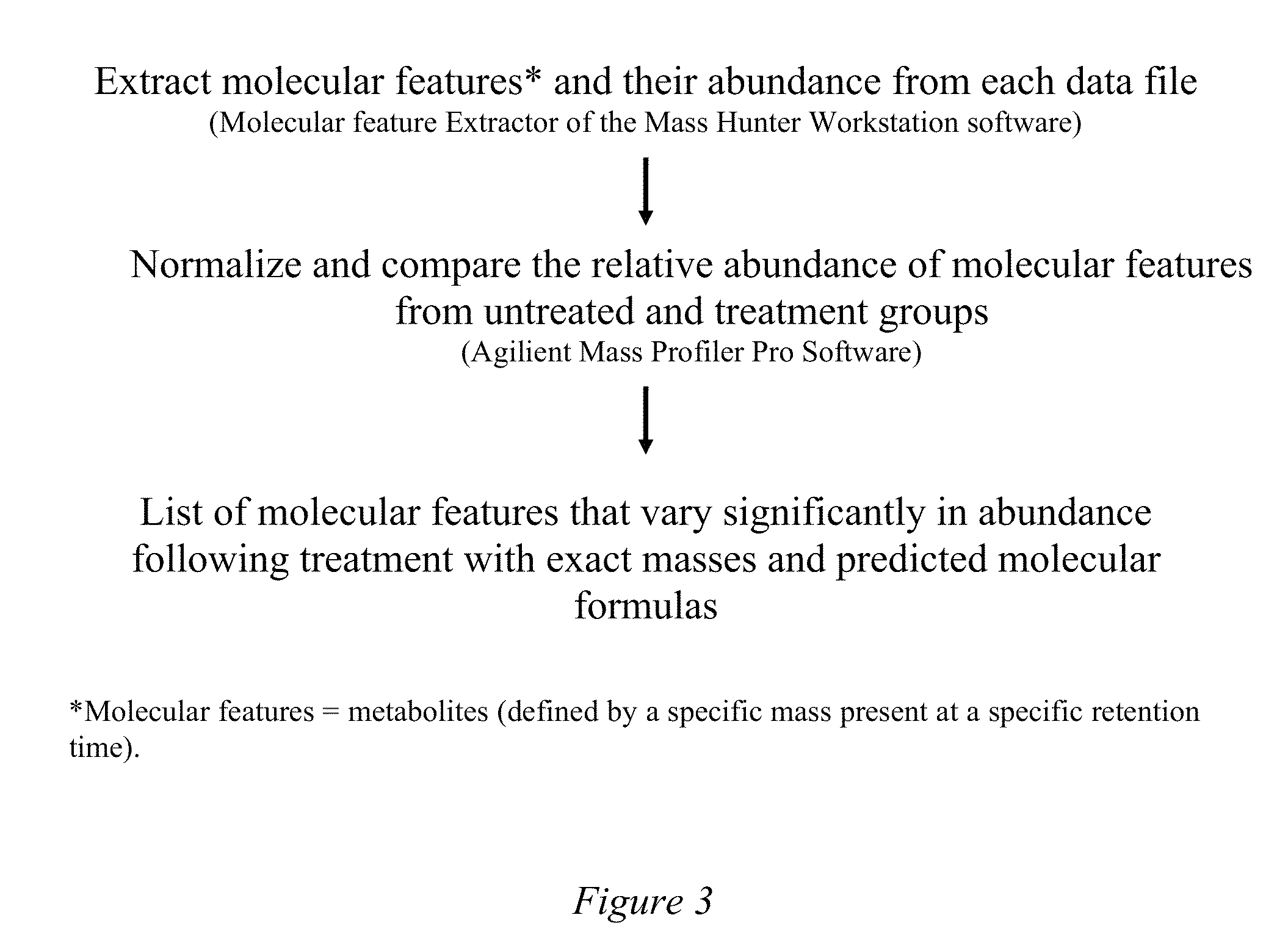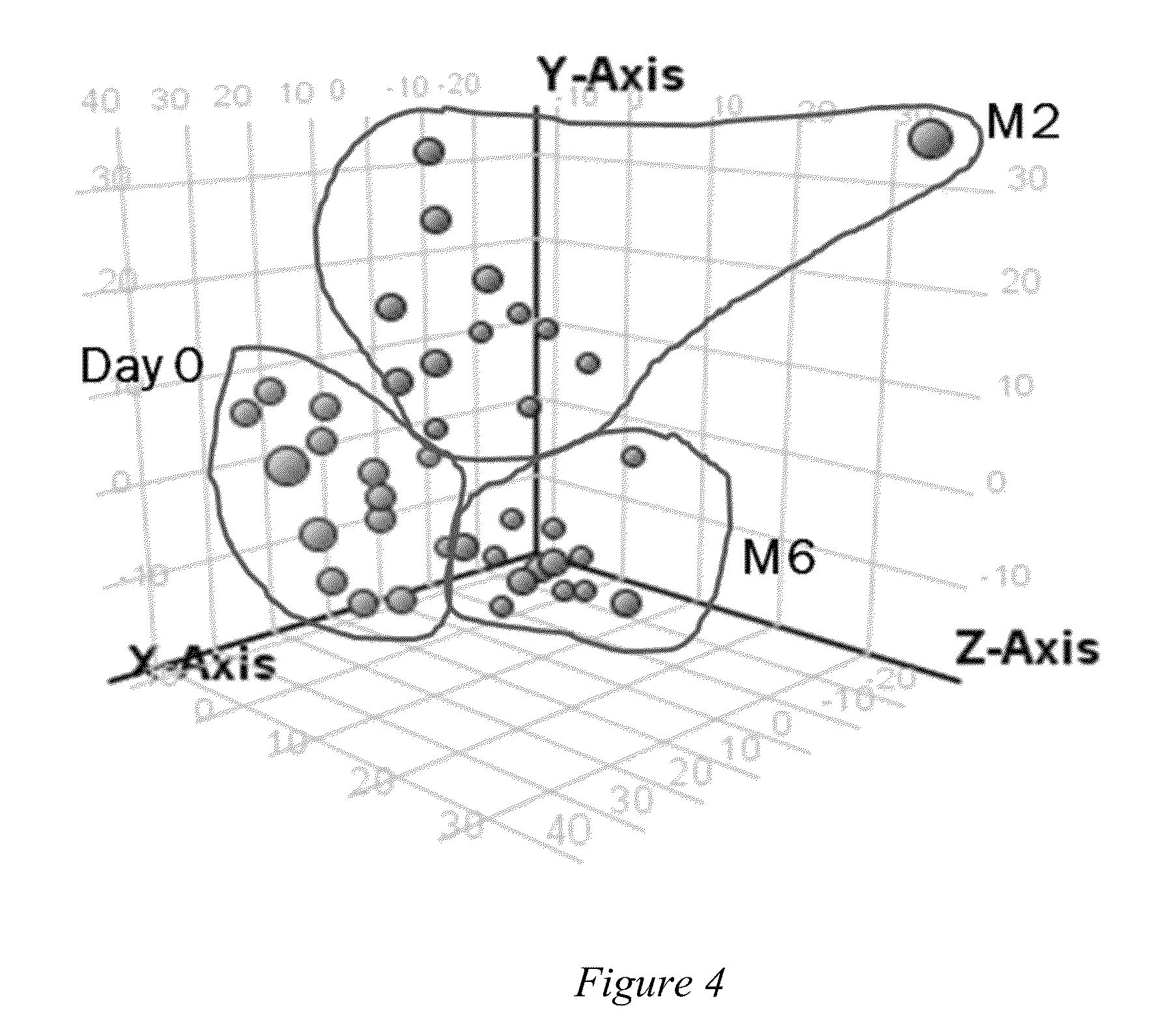Markers for screening anti-mycobacterial treatment efficacy
a technology of antimycobacterial treatment and phenotype, which is applied in the field of mammals' methods of treating pathogenic infections, can solve the problem of not providing a snap-shot of the phenotype of tuberculosis at a molecular level, and achieve the effect of effectively resolving the diseas
- Summary
- Abstract
- Description
- Claims
- Application Information
AI Technical Summary
Benefits of technology
Problems solved by technology
Method used
Image
Examples
example 1
Detailed Materials and Methods for the Initial Identification of Metabolites from Urine Samples
Clinical Samples.
[0087]All the urine samples were procured from Tuberculosis Research Unit (TBRU) Specimen Repository which was collected during two separate clinical trials conducted in Uganda. The first set of samples (from 21 individuals) originated from TBRU IL-2 study [Johnson J L et al., Am. J. Respir. Crit Care Med. (2003) 168:185-191] and the second set of samples (14 individuals) was from TBRU-TBTC study NAA2M. These samples were from adult pulmonary cavitary tuberculosis patients of both sexes with or without HIV co-infection. The samples were at the initial time of TB diagnosis (before start of therapy, D0) and at two weeks (W2), four weeks (W4), eight weeks (W8) and six months of treatment (M6). Urine specimens were stored at −80° C. upon collection and were sterilized by γ-irradiation before analysis for safety reasons.
Liquid Chromatography-Mass Spectrometry (LC-MS) Analysis o...
example 2
Initial Identification of Metabolites from Urine Samples
[0091]Urine is a clinical sample that allows for non-invasive diagnostics. Potential biomarkers of several diseases have been discovered recently from the analyses of urine [Kim, K. et al., Mol. Cell Proteomics. 8, 558-570 (2009); Johnson, J. C. et al., Clin. Gastroenterol. Hepatol. 4, 1358-1365 (2006); Zhang H. et al., Anal. Biochem. 399, 302-304 (2010); Nam H. et al., Bioinformatics. 25, 3151-3157 (2009)]. The ability to identify such biomarkers is a result of the advancement in analytical techniques suitable for identification and quantification of chemicals at low concentrations from complex samples such as urine.
[0092]Urine contains a wide variety of metabolites. A vast majority of these urinary metabolites are below 1000 Daltons [Bollard, M. E., et al., NMR Biomed. 18, 143-162 (2005)]. LC-MS is well suited to analyze products of low molecular mass and is used extensively for metabolomic studies [Dettmer, K., et al., Mass ...
example 3
Detailed Analyses of Urine Samples
[0099]Methods for the analysis of human metabolites in urine and plasma / serum were developed and applied to the evaluation of tuberculosis patient samples over the course of treatment. Specifically, urine samples from the initial day of diagnosis (“day-0”) and two weeks, four weeks or eight weeks, and six months during treatment were assessed and compared with respect to their metabolomic profiles. The standard approach was to normalize the urine samples based the creatinine concentration as estimated by a colorimetric assay kit (Oxford Biochemical Research). Once clinical specimens were processed, aliquots (5-10 μl) were analyzed by LC / MS using an Agilent 6500 qTOF instrument interfaced with an Agilent 1200 HPLC system containing a Waters Atlantis Reversed Phase column or Waters X-bridge C18 column. The MS data obtained was processed using the Molecular Feature Extractor of the Mass Hunter Workstation software (Agilent) to generate a file of molecu...
PUM
| Property | Measurement | Unit |
|---|---|---|
| Time | aaaaa | aaaaa |
| Time | aaaaa | aaaaa |
| Time | aaaaa | aaaaa |
Abstract
Description
Claims
Application Information
 Login to View More
Login to View More - R&D
- Intellectual Property
- Life Sciences
- Materials
- Tech Scout
- Unparalleled Data Quality
- Higher Quality Content
- 60% Fewer Hallucinations
Browse by: Latest US Patents, China's latest patents, Technical Efficacy Thesaurus, Application Domain, Technology Topic, Popular Technical Reports.
© 2025 PatSnap. All rights reserved.Legal|Privacy policy|Modern Slavery Act Transparency Statement|Sitemap|About US| Contact US: help@patsnap.com



